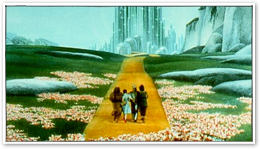

Apple’s NeXT Server Offensive on Microsoft
When Steve Jobs returned to Apple in 1997, he described the new Apple, armed with NeXT technologies, as "shepherding some of the greatest assets in the computer industry."
Audience members listening to Jobs' remarks at the summer 1997 Macworld Expo probably had in mind Apple's own portfolio of products, including the Mac OS, Newton, and QuickTime.
However, Jobs was no doubt referring to the technology developed at NeXT, which was poised to revolutionize Apple and expose the world to software it knew nearly nothing about, despite being almost a decade old.
Apple’s Assets
Of course, Apple did have its own unique and valuable assets, and several were complementary to weaknesses at NeXT. Among them were:
-
•its position as an independent desktop PC maker, not bound to or constrained by Microsoft Windows
-
•its QuickTime multimedia portfolio, which powered digital photography, content creation and playback
-
•its expertise in building hardware
-
•its existing channel partners and loyal installed base of customers
NeXT’s Troubled Sales
In particular, NeXT lacked a developed sales channel or user base. After a poorly implemented struggle to market and sell its own hardware in a model like Apple, NeXT gave up its hardware business to focus on software.
NeXT first attempted to sell a version of NeXTSTEP ported to the PC, and later tried to sell the OpenStep user and development environment to run on top of Windows NT, Sun Solaris, and on other Unix workstations platforms.
While the industry had good things to say about NeXT’s pioneering technologies, it was repeatedly thwarted by its partners, who seemed eager to work with the company, but then repeatedly left it hanging at crucial points:
NeXT’s Asset Vault
By 1996, NeXT's contributions to computing were mostly being forgotten. Few seemed to recall that half a decade earlier, when Microsoft had promised Cairo, NeXT had already delivered a system far more advanced than anything Microsoft would ship in years.
Even Apple's executives didn't seem to really understand what they had acquired. In 1997, Mac users were held in awe by demonstrations of basic NeXT abilities that had been shown off in the standard NeXT demos for years.
Paul Lynch, a NeXT developer for P&L Systems, reported on the January 1997 Macworld Expo:
“Gil [Amelio, Apple’s CEO,] did most of the talking, but called Steve on to demo NeXTSTEP. Steve did two demos: the Interface Builder demo with two sliders and a text field, which he has been doing since '88. The audience goshed and wowed. He then ran six Quicktime movies, all at the same time, while dragging screen captures into a mail message. This was the '93 NeXT Expo demo.
“Quite how the Mac audience can be blown away by two very old, and very simple, NeXTSTEP demos really has to be seen to be appreciated. The level of sophistication is very far from what we have become used to.”
Imagine the world being blown away by a demonstration of Windows 2000 or Mac OS 8.6 done today. Among the NeXT software assets now held by Apple in 1997 were:
-
•its complete, mature object oriented development tools, which had been battle tested in serious business use
-
•its high performance Unix foundation that made it faster than the Mac OS on comparable hardware
-
•its modern graphics and display model
-
•its high level processor independence
A Server Before the Desktop
Mac OS X Server as a product actually predated Mac OS X on the desktop, because NeXT’s assets ended up taking much longer to deliver in a Mac-like desktop product than Apple had expected.
On the server side however, it was a no brainer for Apple to drop its existing AppleShare product based on the Mac OS and replace it with a much more serious server product based on NeXT’s Unix platform.
Seven Years of Efforts by Apple and Microsoft
Last summer's Windows 5x More Expensive than Mac OS X profiled the last several years of desktop operating systems from Apple and Microsoft. The article's title was a throwback to comments made by Paul Thurrott, which dismissed Apple's Mac OS X as costing Mac users "about $750" to keep up to date. Oh Paul.

What he was trying to say was that a user buying a Mac prior to 2000 and using it for seven years could collect every new version of the desktop Mac OS X at full retail... and spend a lot of money running Leopard on a seven year old machine. Well, at least in the ballpark of $500 across seven years.
His math was off by hundreds--perhaps we can blame Pentium Errata--and his logic was asinine, but defending Windows is a big job. He's probably weary of making excuses for Microsoft after waiting so many years for the company to deliver Longhorn, and surmised that the only way to win his one-sided argument was to invent facts.
How else can one criticize the fact that, compared to Microsoft, Apple has released five times as many major updates and over fifteen times as many minor updates to Mac OS X since 2000?
Even worse is the fact that yes, there are seven year old Macs that can run the latest version of Mac OS X! Not so with Vista, which is sluggish on PCs more than a year or two old. Oh the humanity! Poor Paul, it must suck to have to buy a Zune just out of principle.
What's More Expensive Than Windows XP?
Of course, Apple has also released regular new versions of Mac OS X Server. That product is quite a bit more expensive unless, of course, it's being compared to Windows Server. The price of Microsoft's server products is astronomical for small and medium sized businesses, and even worse in the Enterprise.
Beyond the retail price of Windows Server, there are those sneaky client access licenses, which help jack up the price of a comparable Dell server by three times the price of an Xserve running Mac OS X Server, just when serving a hundred users. 

To salt the wound further, when Microsoft boasts about how Vista will create tens of thousands of jobs, it's really saying that its products need far more support resources to maintain them.
Support Nightmares
Anyone who supports Windows Server or Exchange knows that they require more effort, takes more resources, and incur far more expense. Every service under Windows demands its own server. Minimally, a network admin sets aside one to run an Active Directory domain, another for Exchange email, and another for file sharing.
Microsoft licenses its Small Business Server to pack all three products onto one PC Server; this ensures that the package deal is worthless for anything beyond demonstration purposes. To really run a small IT shop, users have to buy a new PC server or two for every service they need to offer.
The Staggering Costs of Being Cheap
Once an IT shop goes Windows, they need to install a client access license payment pipeline to Microsoft and can then begin going out of business by making some of the richest executives in the world even richer.
Setting up a Windows shop is like shopping at WalMart; it's deceptively cheap on the surface, but when the real costs are added up, it is actually outrageously expensive and destructive on many levels.
People who buy cheap Chinese parts for hobbyist PCs and then steal a copy of Windows to run on it think they are saving money, but after the real costs are considered, they are not. On the server side, investing in Windows is even worse.
It used to be that cheapskate PC pirates helped to prop up the Windows monopoly; as Microsoft works to stop piracy, it also erodes away at its own relevance. That’s because Microsoft does poorly when competing on merits.
Unix Returns
Despite the seemingly obvious logic that would suggest Linux should make an attractive desktop PC product, it has not been able to make major inroads on Windows market share. However, Windows Server licensing is so expensive that Linux has made a huge impact in servers.
Even as Microsoft has tired to attack the threat poised by Linux servers, its former partners--from IBM to Novell to Oracle to HP and Dell--have been moving toward Linux; nobody wants to pay Microsoft out of pity.
The increase in development for Linux also complements Apple's own server developments, since both share the same server software and are built upon a common Unix platform.
A historical overview of Apple's Mac OS X Server deliverables demonstrates how Apple has used open source software to make rapid progress in developing a new server business, after falling flat in the early 90s.
Further, Apple has also worked to increasingly adopt open development principles of its own, and is sharing key new server applications as it develops them. The next article shows how this has played out over the last decade.

Next Articles:
This Series


 |
|
 |
|
 Del.icio.us |
Del.icio.us |
 Technorati |
About RDM :
:
Technorati |
About RDM :
:

Sunday, February 18, 2007





 Send Link
Send Link Reddit
Reddit NewsTrust
NewsTrust






